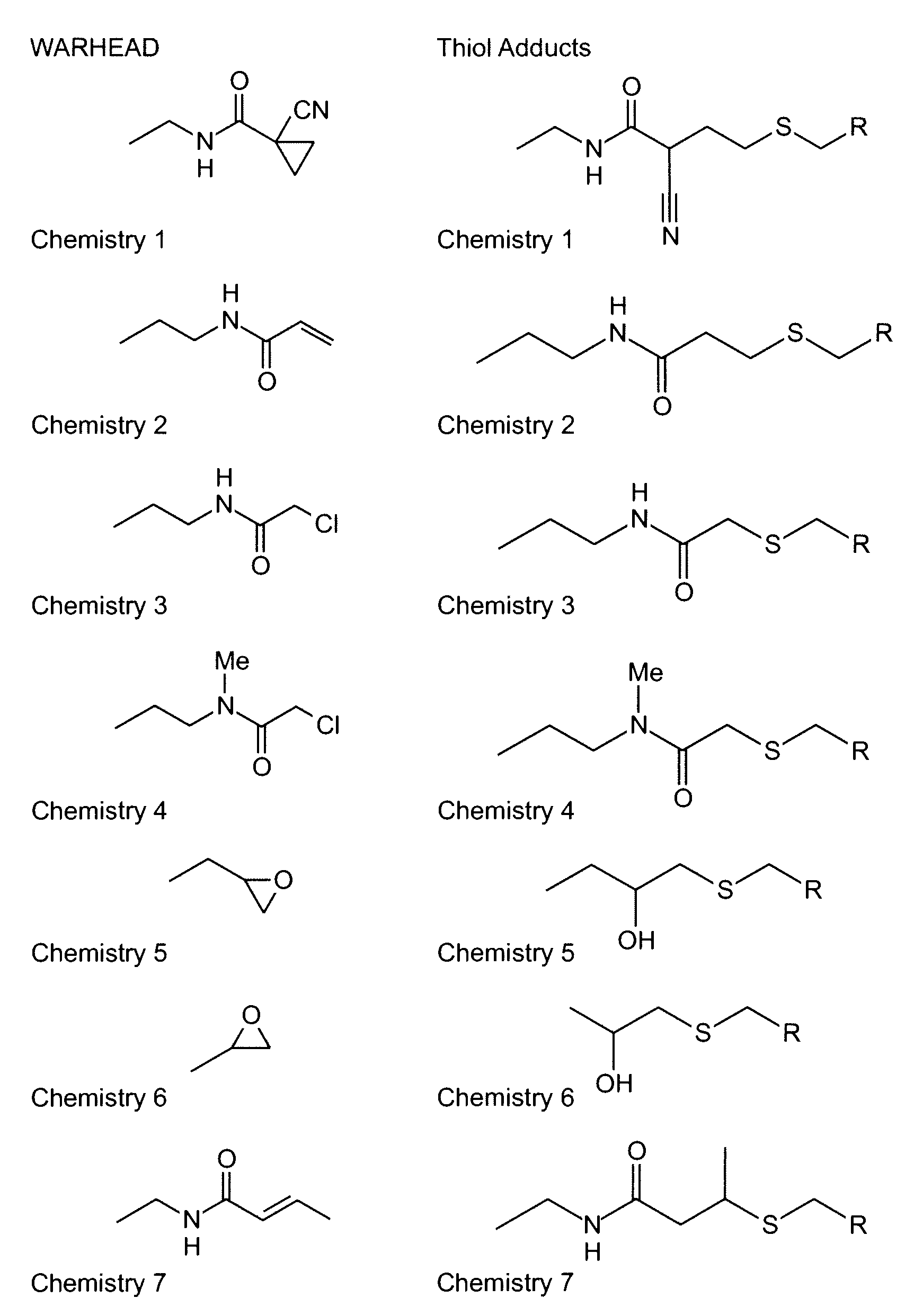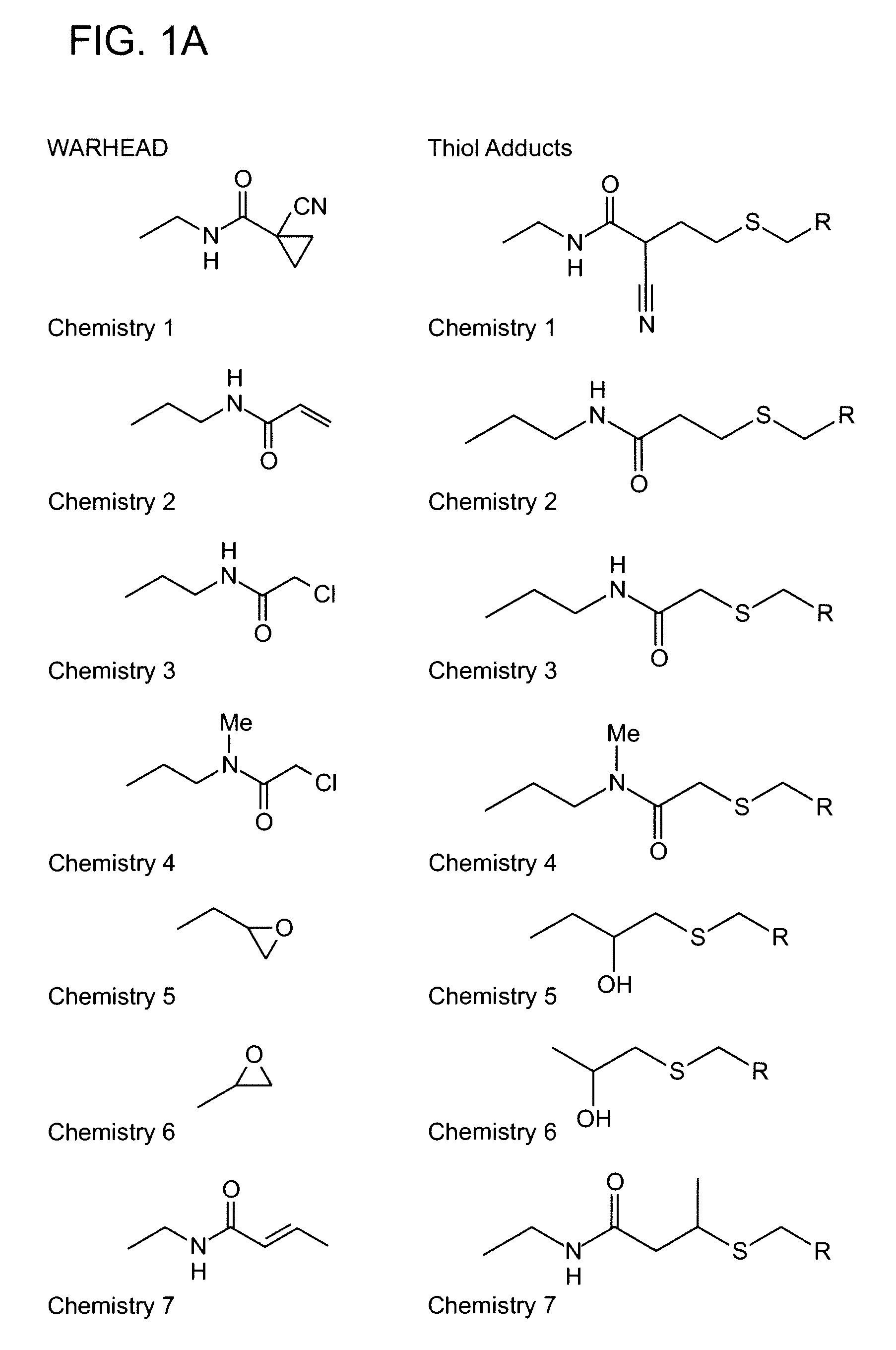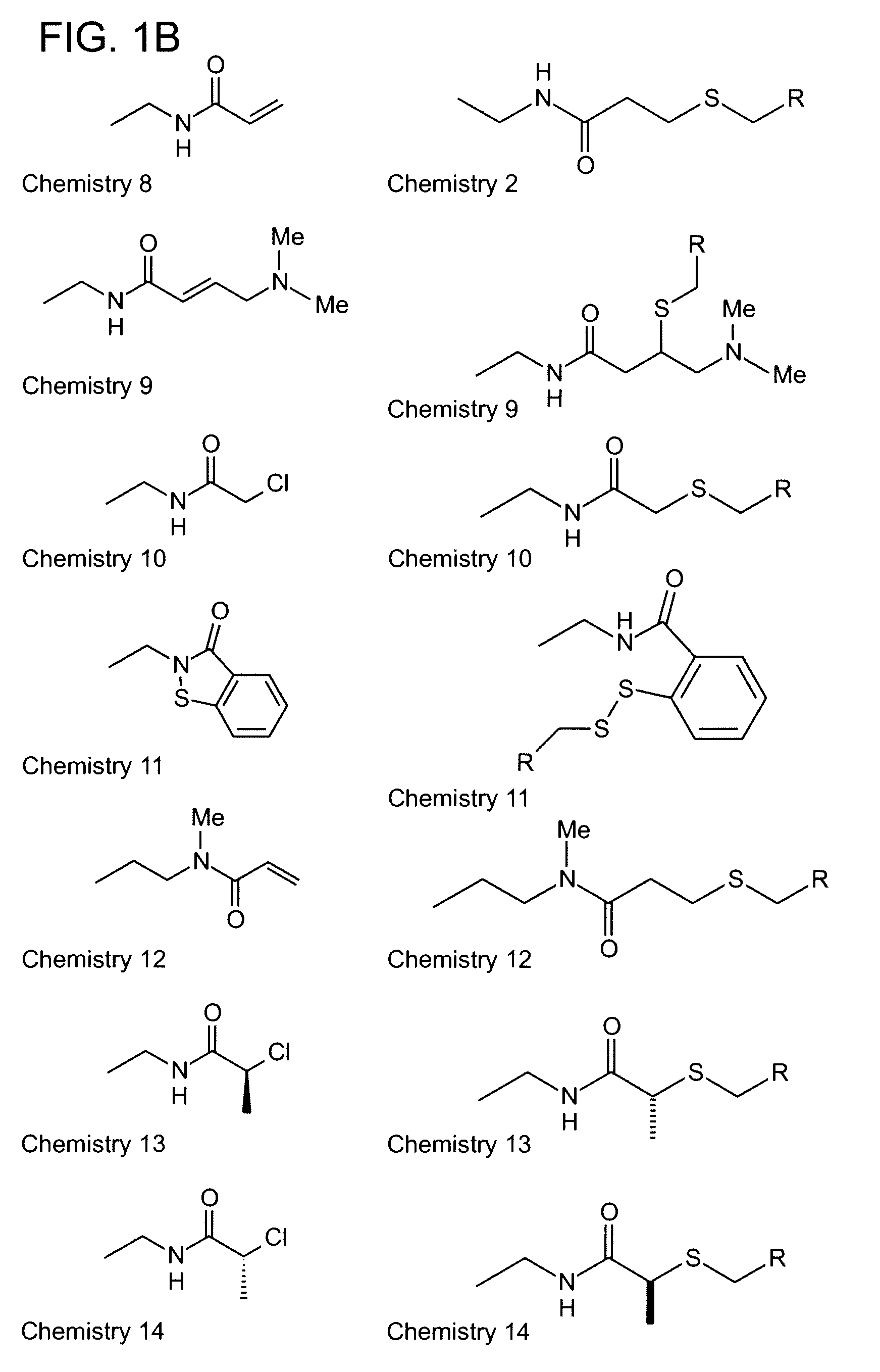Algorithm for designing irreversible inhibitors
a technology of irreversible inhibitors and algorithms, applied in the direction of drug compositions, peptides, molecular structures, etc., can solve the problems of other undesirable effects, difficult to develop irreversible inhibitors that selectively inhibit one or more desired kinases, etc., and achieve the effect of efficient design of irreversible inhibitors and reduced time and costs
- Summary
- Abstract
- Description
- Claims
- Application Information
AI Technical Summary
Benefits of technology
Problems solved by technology
Method used
Image
Examples
example 1
Irreversible Imatinib
[0208]Imatinib is a potent reversible inhibitor of cKIT, PDGFR, ABL, and CSF1R kinases. Using the design algorithm described herein, this reversible inhibitor was rapidly and efficiently converted into an irreversible inhibitor of cKit, PDGFR and CSF1R kinases. In addition, it is shown that the subject method identifies when it is not possible to readily convert a reversible inhibitor of a target into an irreversible inhibitor of that target, as was the case in the ensuing example for imatinib and the target ABL.
[0209]A. cKIT
Design Method
[0210]The coordinates for the x-ray complex of cKIT bound to imatinib (pdbcode 1T46) were obtained from the protein databank (world wide web rcsb.org). The coordinates of imatinib were extracted and all protein Cys residues within 20 angstroms of imatinib when bound to cKIT were identified using Discovery Studio (v2.0.1.7347; Acccelrys Inc., CA). This identified seven residues Cys660, Cys673, Cys674, Cys788, Cys809, Cys884, and ...
example 2
Irreversible Nilotinib
[0257]Nilotinib is a potent reversible inhibitor of ABL, cKIT, PDGFR and CSF1R kinase. Using the structure-based design algorithm described herein, nilotinib was rapidly and efficiently converted into an irreversible inhibitor that was shown to inhibit cKIT and PDGFR.
A. ABL
[0258]The coordinates for the x-ray complex of nilotinib bound to Abl (pdbcode 3CS9) was obtained from the protein databank (world wide web rcsb.org). The coordinates of nilotinb were extracted and all protein Cys residues within 20 angstroms of nilotinib when bound to ABL were identified. Then, 14 substitutable positions on the nilotinib template (II-1) were explored in three-dimensions to determine which could be substituted with a chloroacetamide warhead to form a covalent bond with the Cys in the binding site. The methodology identified no template positions or a suitable Cys that could be modified
B. PDGFRa
[0259]A homology model of PDGFR alpha kinase (Uniprot code: P16234) was produced us...
example 3
Irreversible VX-680
[0270]VX-680 is a potent reversible inhibitor of FLT3 kinase. Using the structure-based design algorithm described herein, VX-680 was rapidly and efficiently converted into an irreversible inhibitor of FLT-3.
[0271]The binding mode of VX-680 to Flt3 was determined by inference from the binding mode of VX-680 with the related Aurora Kinase, as the crystal structure of the Aurora Kinase complex with VX-680 has been determined. A homology model of FLT3 was built using the x-ray structure of Aurora Kinase (pdbcode 2F4J) using the protein modeling component in Accelrys Discovery Studio (Discovery Studio v2.0.1.7347, Accelrys Inc). The alignment used for the model building was based upon the structural alignment of the x-ray complexes of FLT3 and Aurora kinase. The high structural similarity between these two proteins, and the high similarity of the binding site positions further supported the homology modeling strategy.
[0272]Structural alignment between FLT3 (1RJB) and ...
PUM
| Property | Measurement | Unit |
|---|---|---|
| Molar density | aaaaa | aaaaa |
| Molar density | aaaaa | aaaaa |
| Molar density | aaaaa | aaaaa |
Abstract
Description
Claims
Application Information
 Login to View More
Login to View More - R&D
- Intellectual Property
- Life Sciences
- Materials
- Tech Scout
- Unparalleled Data Quality
- Higher Quality Content
- 60% Fewer Hallucinations
Browse by: Latest US Patents, China's latest patents, Technical Efficacy Thesaurus, Application Domain, Technology Topic, Popular Technical Reports.
© 2025 PatSnap. All rights reserved.Legal|Privacy policy|Modern Slavery Act Transparency Statement|Sitemap|About US| Contact US: help@patsnap.com



